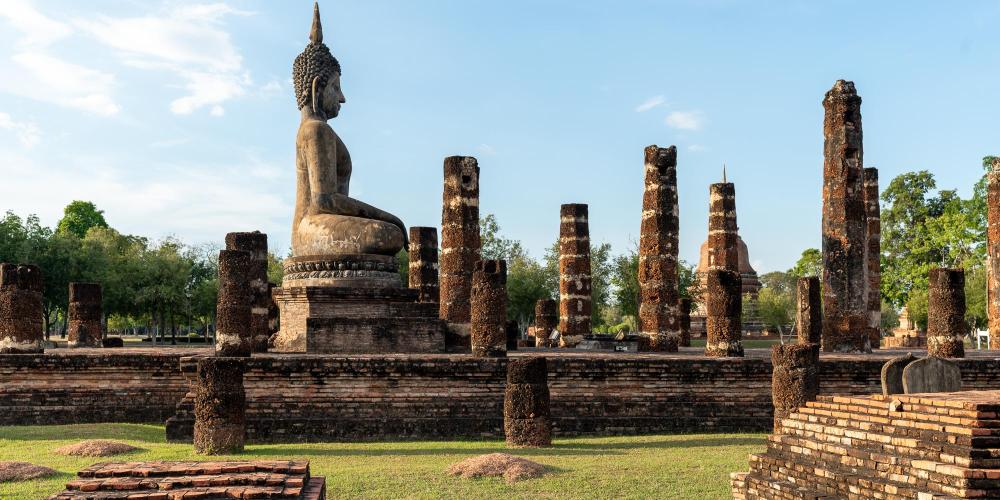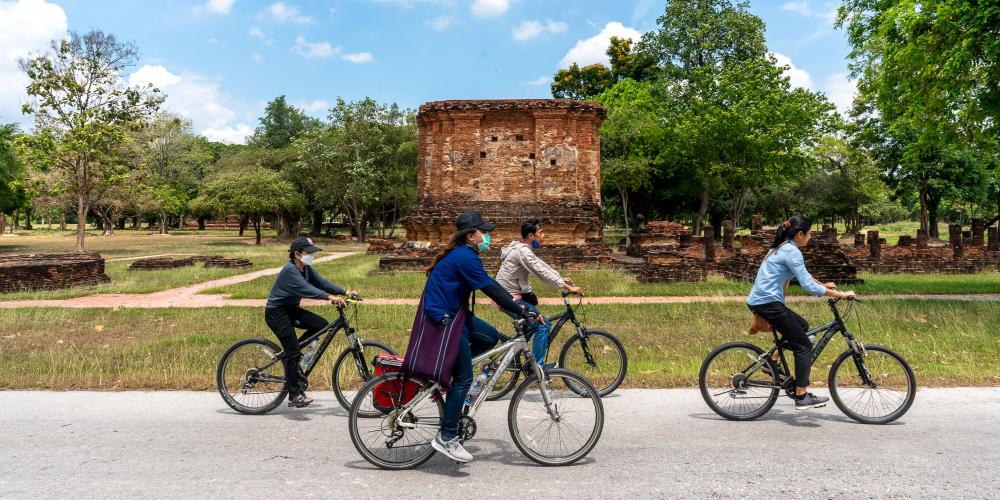Sukhothai and Associated Historic Towns

In the years before Sukhothai’s rise as a political capital, the region was controlled by the powerful Khmer Empire, based in Angkor in modern Cambodia. As tensions grew between the powerful rulers in the southeast and the ethnic Thais who had settled in Sukhothai, a movement emerged to claim independence. In 1238, they rose up and the new Sukhothai Kingdom was proclaimed, with the local chief crowned as king under the regal name Si Inthrathit. It was the beginning of the first kingdom of Thailand and is considered by many to be the official founding of the country.
Located at an important juncture of trade routes, Sukhothai connected commercial centres in the region. But it wasn't until Si Inthrathit's second son, Ramkhamhaeng the Great, took the throne in 1279 that the kingdom used its position to begin its expansion. Sukhothai grew rapidly across much of Southeast Asia and became a prosperous hub, increasing its economic and political might. It became particularly well known for its ceramics, manufactured in enormous underground kilns and traded as far as China and Japan.
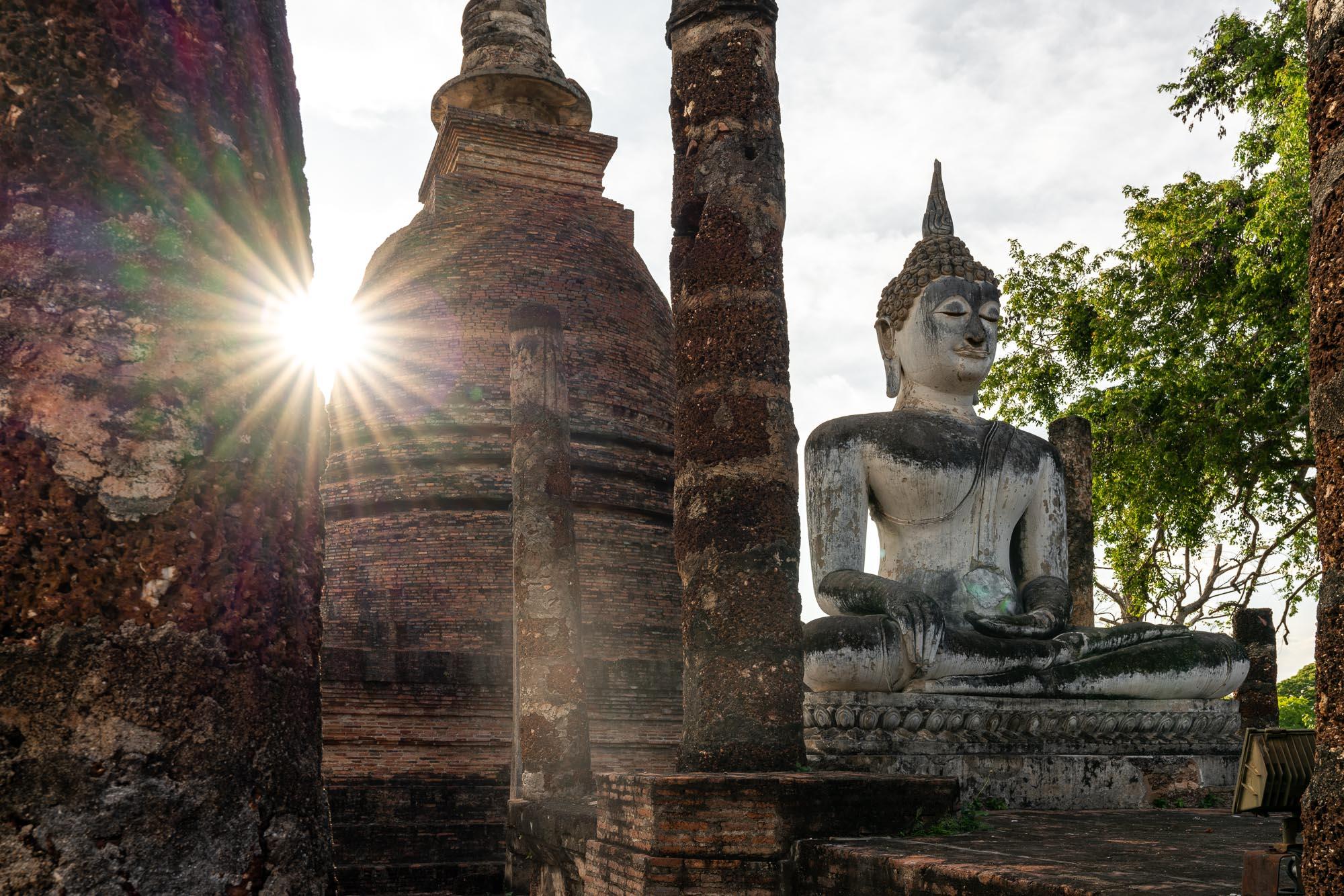
Until the founding of the Sukhothai Kingdom, people in the region had practiced a range of religions, influenced by the various empires that wrestled for control – particularly elements of Hinduism from the Khmer and Mahayana Buddhism from the Lavo Kingdom. But in Sukhothai, King Ramkhamhaeng embraced Theravada Buddhism, particularly the teachings that were coming from Sri Lanka, so much of the population eventually followed his lead. This royal patronage set the foundation for Theravada Buddhism to become the dominant religion in Thailand, where it's still followed by about 95 per cent of the population today.
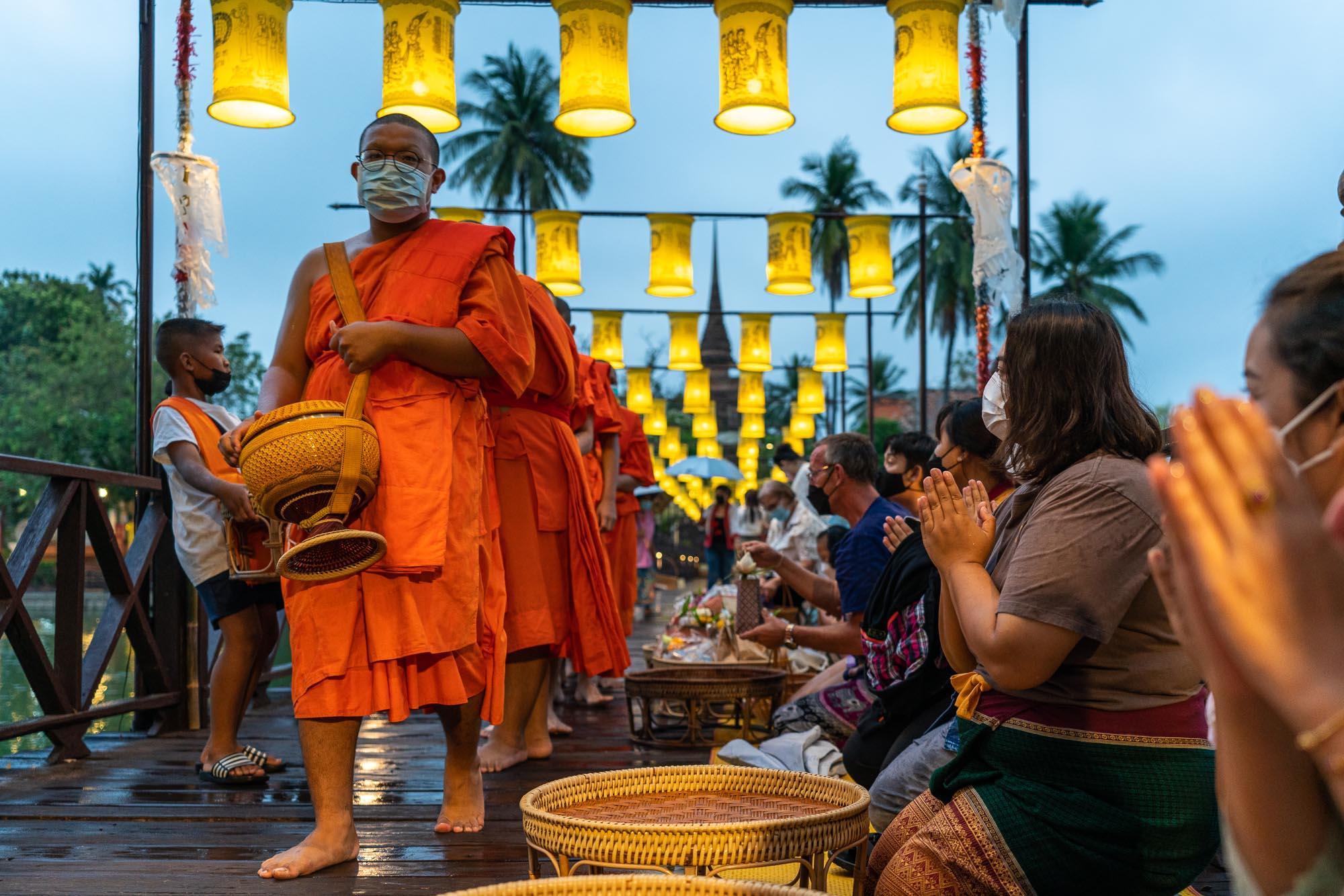
Buddhism became an important part of life in Sukhothai and a huge number of temples and monasteries were built across the city. In the centre, the largest monuments near the palace were mainly ceremonial and used by the king and senior monks. Outside the city walls, more temples and monasteries were built for the increasing number of followers who were starting to live in the new capital. Today, many of these sites remain and it's easy to get a sense of their grandeur as you explore the historical park.
The historic city of Sukhothai, along with satellite cities of Si Satchanalai and Kamphaeng Phet, are nestled amongst the forests of northern Thailand, with temples set in a tranquil environment shaded by trees and lit by dappled light. At each location, you can easily explore the monuments built by kings, some with enormous statues of Buddha and dramatic collections of stupas. In the surrounding areas, cultural experiences offer an authentic insight into Thai life, much of which has been influenced by practices passed down from the time of the Sukhothai Kingdom, more than 600 years ago.
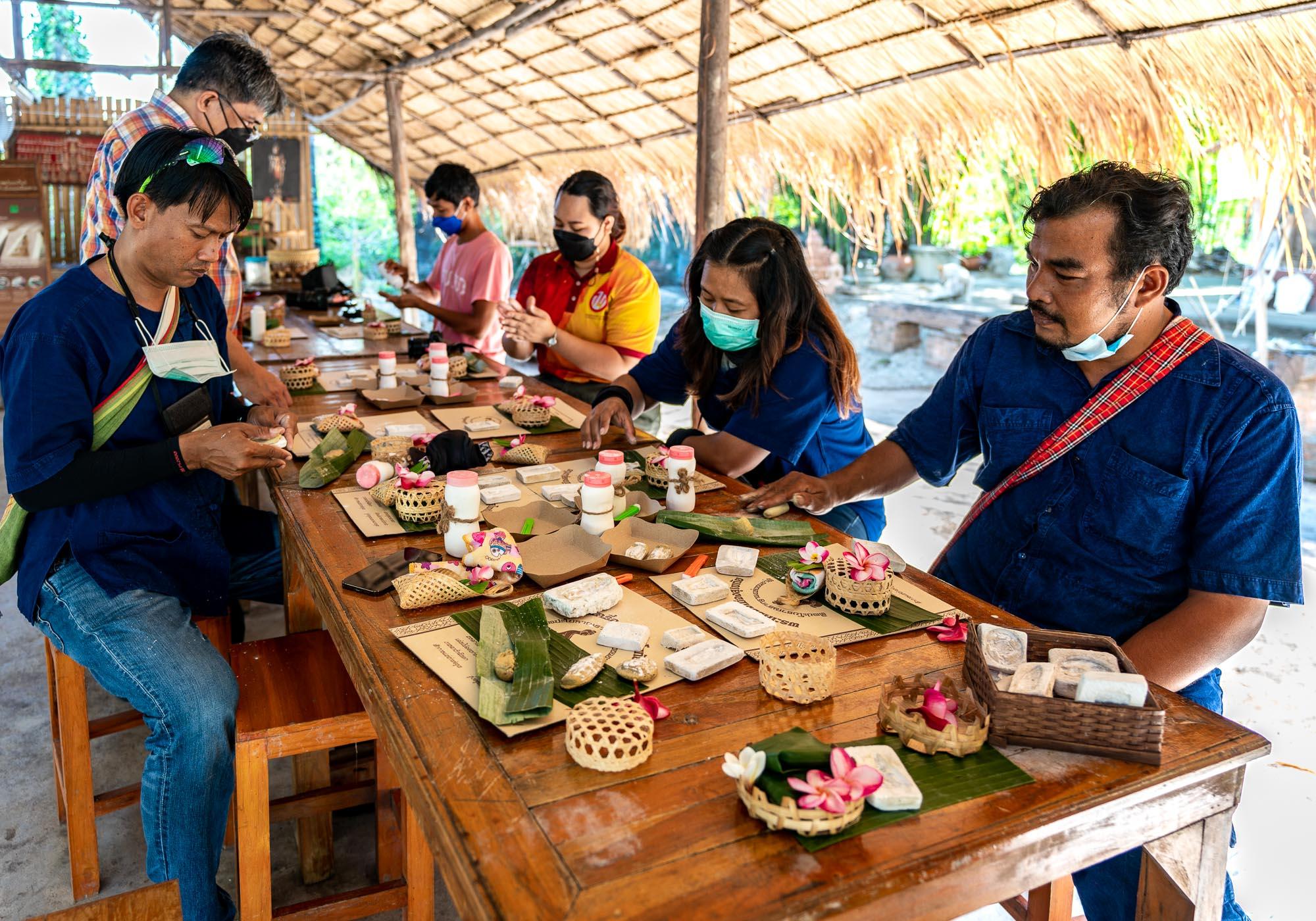
Although the city of Sukhothai was the foundation and capital of the kingdom, the two other nearby cities were also important and are included in the World Heritage site. Although they were run independently and have their own characteristics, the three cities effectively operated as a single political entity, sharing a common language, administrative system, and legal framework. For visitors, there's lots to see in Si Satchanalai, about 45 kilometres north of Sukhothai, and in Kamphaeng Phet, about 65 kilometres south, and both are well worth the visit.
Sukhothai
The Sukhothai Historical Park is divided into five different areas – Central, North, East, South, and West. Each has its own distinctive attractions and it's recommended you make the time to see several different parts of the ancient city.
In the Central zone, you'll find the most important temples, including the city's principal temple of Wat Mahathat, the Khmer-influenced Wat Si Sawai, and the picturesque Wat Sa Si on an island in the main reservoir.
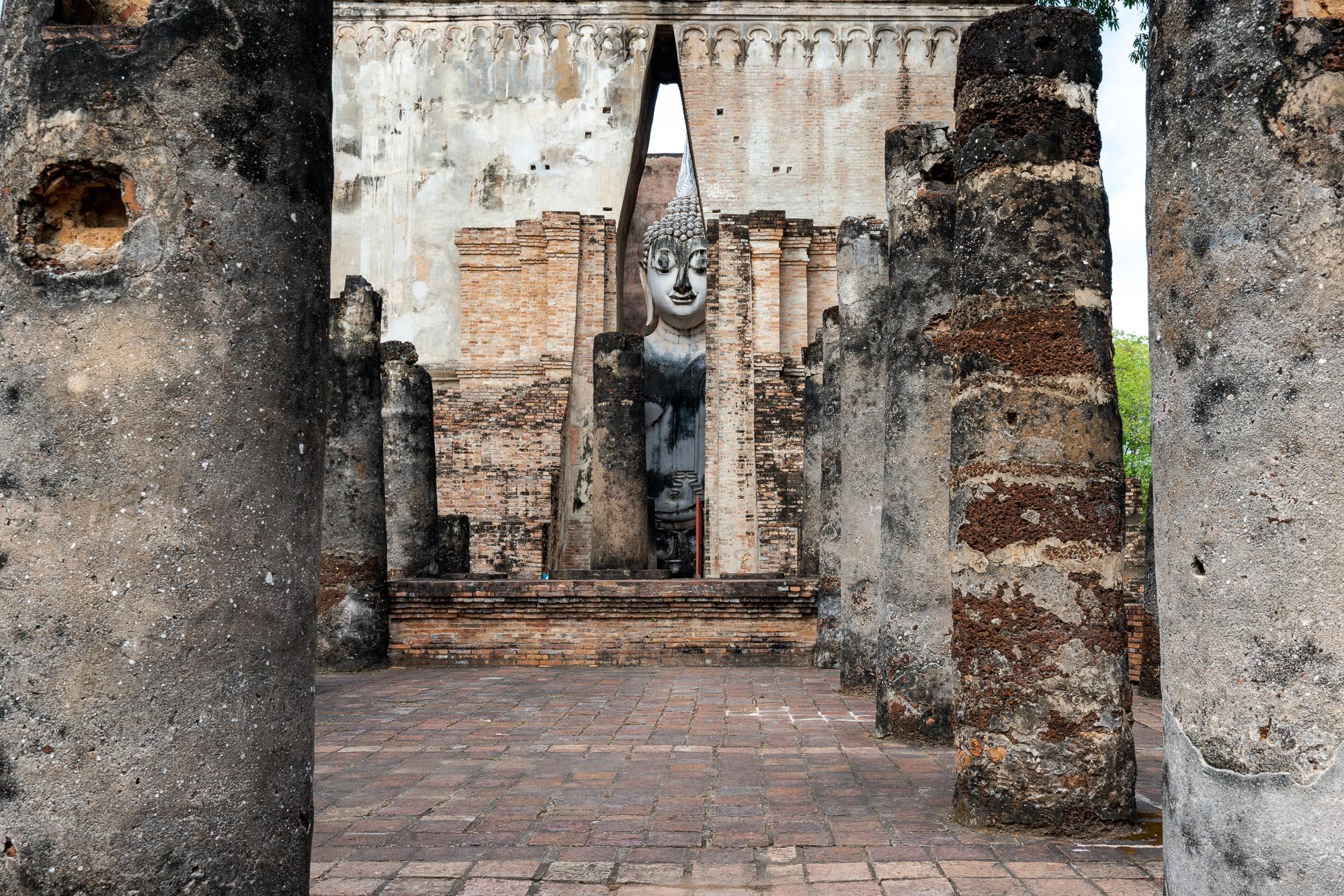
The highlight of the North zone is Wat Si Chum, famous for its enormous 15-metre-high sitting Buddha image. In the West zone, the forest temples give you an insight into the tranquil monastic life, particularly at Wat Saphan Hin atop a 200-metre-high hill. The South and East zones have fewer iconic temples to visit but offer some charming countryside.
Si Satchanalai
About 45 kilometres north of Sukhothai, Si Satchanalai was considered the second city of Sukhothai, a spiritual centre of the kingdom and an important workshop for the ceramic industry. The status of the city was demonstrated when King Ram Khamhaeng was appointed to rule it before he ascended to the throne.
The centre of the Si Satchanalai Historical Park is enclosed by 3.8 kilometres of fortified brick walls. Highlights include Wat Chang Lom and its elephant sculptures around the base, Wat Chedi Ched Thaeo with a total of 33 stupas, and Wat Nang Phaya which is significant for its intricate stucco on the southern wall.
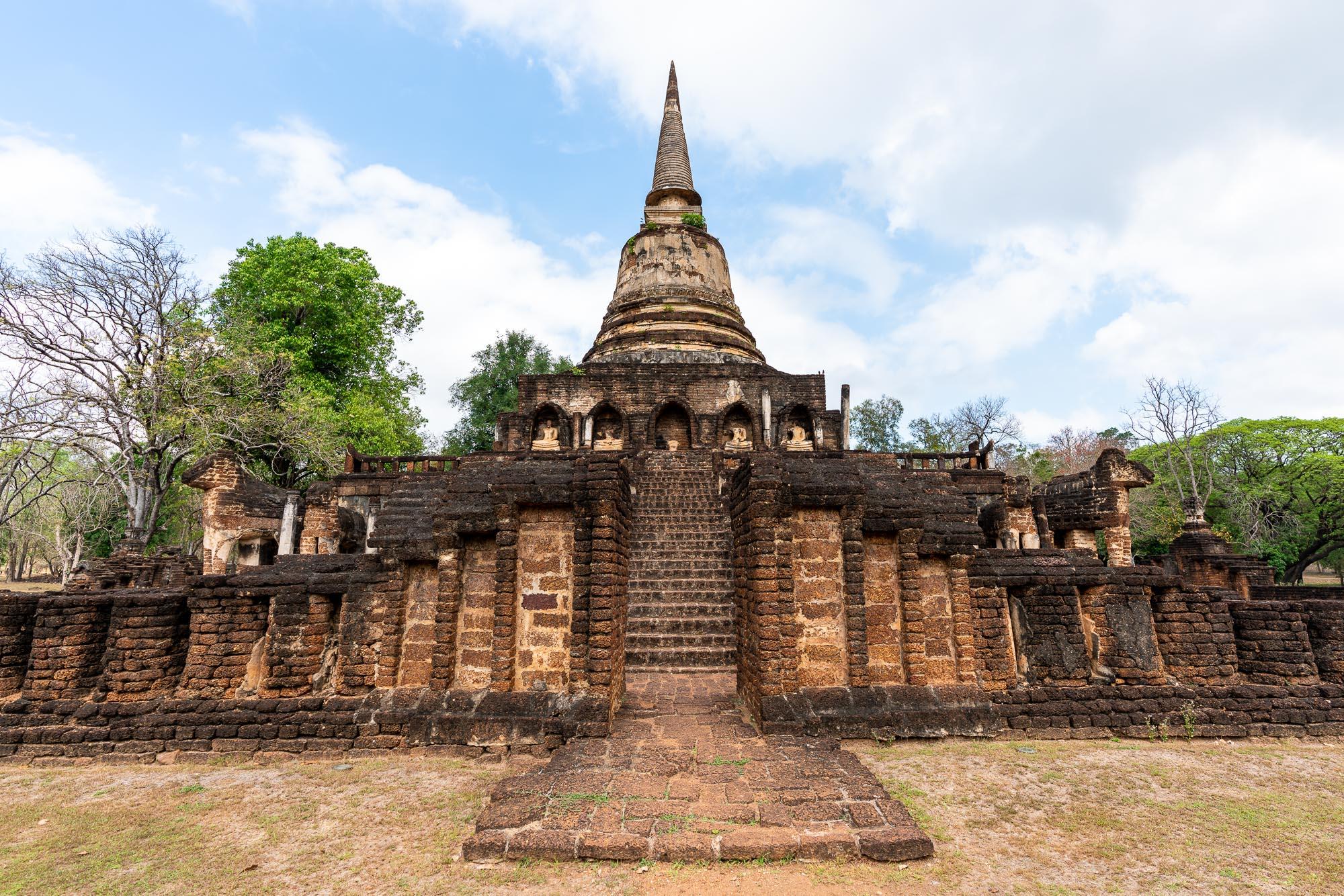
Further out from the centre of the historic part of Si Satchanalai, another important site to visit is Wat Phra Si Rattana Mahathat. The temple has a number of interesting features but the most iconic is the walking Buddha statue that has become a symbol of the region because of its beautiful oval face with a slight smile and raised eyebrows.
Kamphaeng Phet
The city of Kamphaeng Phet was strategically placed about 65 kilometres south of Sukhothai to serve as a military base to protect the kingdom from foreign invaders. As a large urban centre in the 14th century, it also had an impressive array of monumental buildings.
There are two main zones in Kamphaeng Phet Historical Park, with the largest being the Forest Temple Zone, also known as Khet Aranyik. There are about 30 temples here, including the largest at Wat Phra Non, the beautiful Wat Chang Rob surrounded by 68 elephant sculptures, Wat Phra Si Ariyabot that has four Buddhas placed in unusual curving walls, and Wat Avasa Yai, which is distinctive because it has a monk's house with an ensuite!
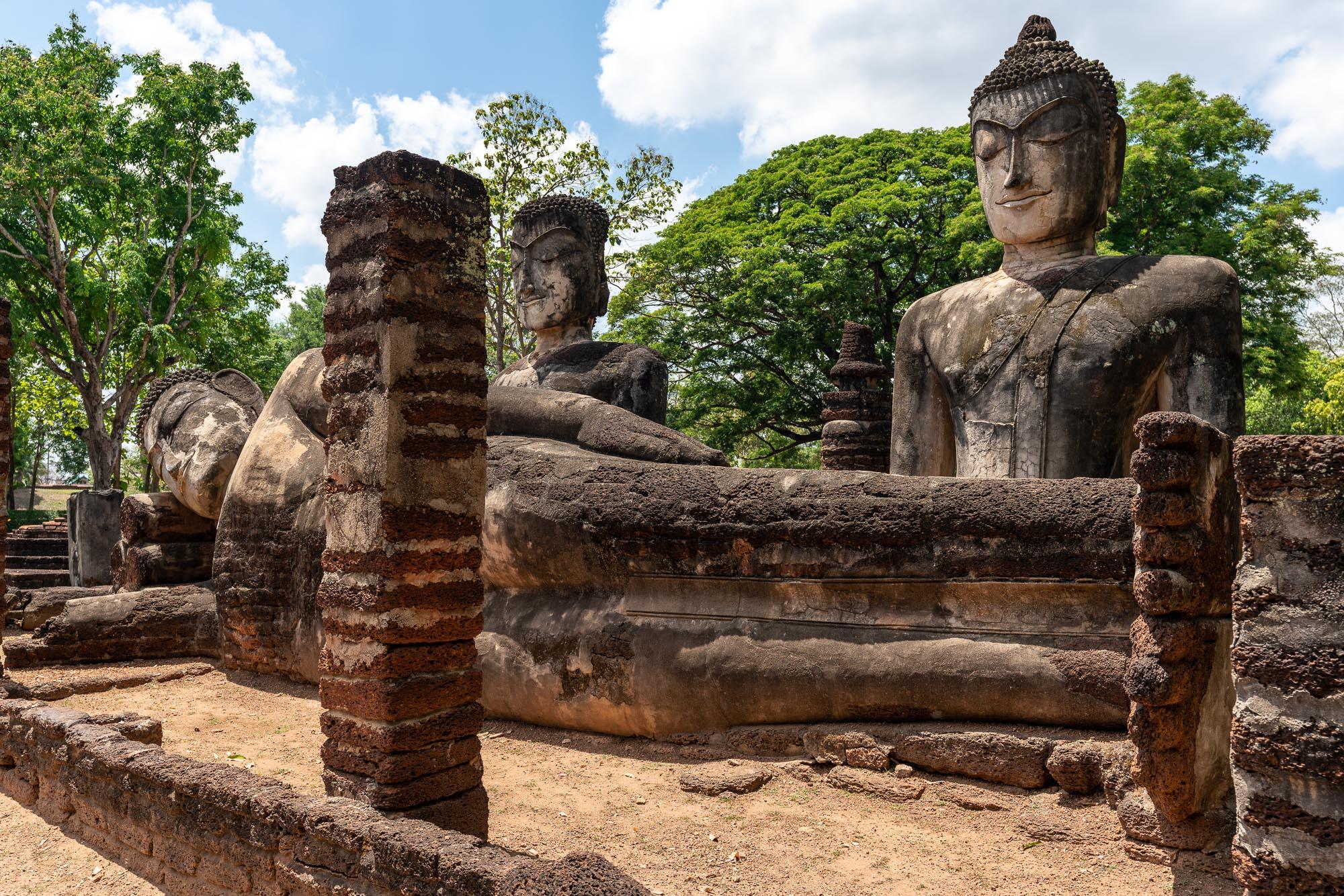
The other main part of the historical park is the Inner Zone, which is dominated by the vast Wat Phra Kaeo and adjacent Wat Phra That, which would have been the main temple for the king and features impressive stupas and statues.
